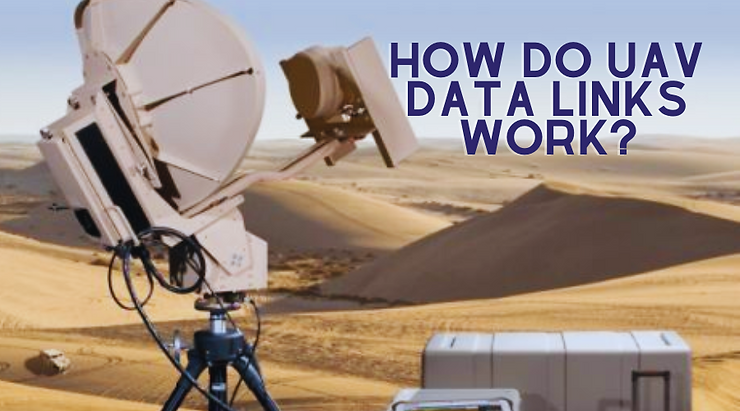How Do UAV Data Links Work?
- bjunitedforce
- Jun 10, 2024
- 3 min read
Updated: Jun 19, 2024

Soar high above the bustling cityscape with a sleek UAV. It isn't just capturing breathtaking aerial footage; it's engaged in a silent symphony, constantly sending a stream of vital information – a real-time feed of its camera's view and sensor data. This invisible thread, carrying the UAV's whispers, is the magic of UAV data links. Let's decode this crucial technology.
The Players in the Data Link Orchestra:
Picture the UAV data link system as a well-rehearsed orchestra, each component playing a critical role:
The action starts here. Cameras, sensors, and other data-gathering equipment onboard the UAV act like tireless journalists, continuously collecting information. Depending on the mission, this could be anything from high-resolution visuals to temperature readings, such as painting a detailed picture of the environment below.
Once the data is collected, it's like a faint whisper. The UAV transmitter steps in, acting as a consequential conductor. It boosts the signal's strength, transforming it into a robust radio wave or a digital message suitable for cable transmission. Imagine this as amplifying the reporter's voice to ensure their message reaches the audience.
Amplified data embarks on its journey, zipping through the air or traveling through cables. Its destination? The ground station receiver is the maestro of this data orchestra. This receiver acts like a giant ear, capturing and translating the incoming signal into a format humans can understand. Finally, the mission details become apparent, allowing operators to make informed decisions.
Choosing the Right Transmission Highway:
Not all UAV missions are created equal. Similarly, UAV data links utilize different transmission methods depending on the mission and environment:
Radio Frequency (RF) Links: These are the reliable workhorses of UAV data links, offering a solid connection over moderate distances. Clear radio channels transmit the UAV's data waves, like a reliable local news broadcast reaching nearby viewers.
Microwave Links: Microwave links are crucial for missions requiring longer-distance flights. Imagine them as a high-bandwidth data highway, offering a clear and stable connection for even far-flung UAVs, similar to a national news channel reaching a wider audience.
Satellite Links: For missions beyond the reach of traditional methods, satellite links step up. Think of them as cosmic messengers, bouncing the data signal off orbiting satellites to reach the ground station, no matter how remote the UAV's location. This allows the UAV's message to get to the control center, even from the globe's farthest corners.

Keeping the Communication Clear: Overcoming Challenges
Like static disrupts a radio broadcast, UAV data links can face challenges that affect signal clarity. Here's how experts navigate these hurdles:
Interference: Imagine a crowded radio station with overlapping signals. Other radio waves can interfere with the UAV's data transmission. Techniques like frequency hopping and error correction codes help mitigate this issue, ensuring the message reaches the receiver.
Range Limitations: The distance of a data link depends on the chosen technology and terrain. Careful planning and signal boosters can extend the reach when necessary, allowing the UAV's voice to travel further.
Security Concerns: Protecting the data from unauthorized access is crucial. Encryption protocols scramble the data during transmission to ensure the UAV's messages remain confidential, like encrypted communication channels used in sensitive operations.
FAQs About UAV Data Links:
1. How much bandwidth do I need for my UAV data link?
The bandwidth requirement depends on the type of data you're transmitting. High-resolution video requires more bandwidth than simple sensor readings. Consulting a UAV data link expert can help you determine the right option for your needs.
2. What are the different types of UAV data link antennas?
There are various antenna types, each with its advantages. Omnidirectional antennas provide a wider signal reach, while directional antennas offer a more focused connection for longer distances.
3. How secure are UAV data link systems?
Reputable data link suppliers offer solutions with robust encryption protocols. These protocols ensure your data remains confidential and protected from unauthorized access.



Comments